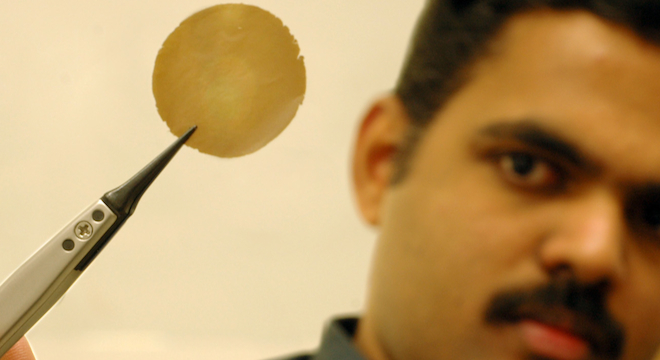Graphene, the wondrous nano-material made up of graphite shavings that promises to revolutionize everything from consumer electronics to electric car batteries, may also revolutionize another product: booze.
When scientists at the University of Manchester in the UK placed placed water in a metal container coated with sheets of graphene oxide — a derivative of graphene covered in other molecules — the water evaporated through the container as if it weren’t even there, forming sheets of ice one molecule-thick on the outside before sloughing off.
But when they tried repeated the experiment by filling the graphene oxide container with other substances — including extremely transitory helium gas — the molecules remained trapped inside the container, due to the fact that the molecules weren’t shaped correctly to fit through the graphene oxide sheets.
When the scientists tried with vodka, it actually increased in alcohol potency, as the remaining water molecules seeped out but the vodka remained in the container. As graphene researcher Rahul Nair explained in a release from the University of Manchester:
“Just for a laugh, we sealed a bottle of vodka with our membranes and found that the distilled solution became stronger and stronger with time. Neither of us drinks vodka but it was great fun to do the experiment.”
While that is good news for prospective home alcohol brewers down the road, when graphene becomes more commonplace, it’s not necessarily going to be the first choice for professional distilleries, the Manchester release states.
Still, the news does add another feature to graphene’s growing list of superlatives, including the fact that it is the strongest, most electrically conductive and one of the lightest and most flexible materials ever tested, giving it a wide range of potential applications once researchers begin to figure out how to synthesize it in large enough quantities. Scientific institutions around the world are attempting to do that right now. Graphene was first synthesized by University of Manchester researchers in 2004 by taking scotch tape and sticking it to larger chunks of graphite — used as the writing material in pencils — then literally ripping it off and picking off the resulting graphene shavings.
The Manchester team published their latest findings in the journal Science late in 2011.









